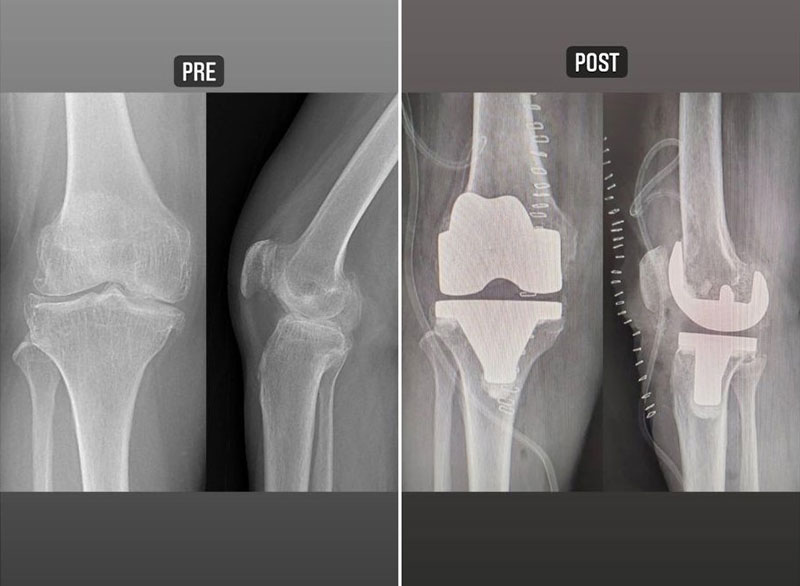
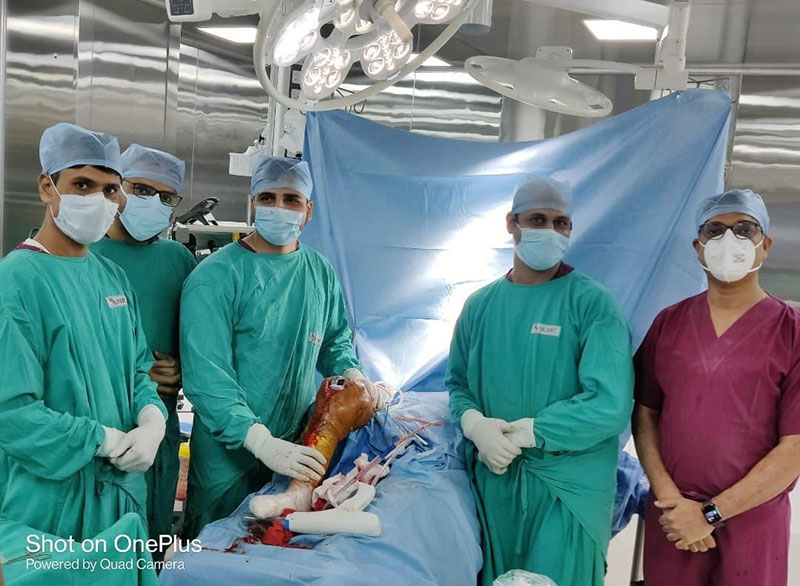
Patient Profile:
Background: The patient, a 76-year-old lady, presented with severe osteoarthritis in her left knee. This condition led to intense pain, which significantly impaired her ability to perform daily activities. Osteoarthritis, a degenerative joint disease, is characterized by the progressive loss of articular cartilage, leading to joint pain and stiffness. It is a common condition in elderly individuals and can severely affect their quality of life.
Initial Treatment: The first line of treatment for osteoarthritis typically includes conservative approaches such as:
These conservative measures are often effective in early-stage osteoarthritis. However, the patient’s condition was advanced, and conservative treatment failed to provide sufficient relief. As a result, surgical intervention became necessary.
Surgical Intervention: Given the severity of her condition, the patient underwent a Total Knee Replacement (TKR) of the left knee. This procedure involved the removal of the damaged articular cartilage and its replacement with a prosthetic joint. The decision for TKR was based on the following factors:
Post-Operative Outcomes: The patient experienced significant pain relief following the surgery. She was able to resume her daily activities with minimal discomfort. Her mobility improved, and she no longer required the same level of analgesic medication as before the surgery.
Follow-Up: One year after the surgery, the patient returned for a follow-up consultation. She reported continued pain relief and improved knee function. Her mobility had increased, and her overall quality of life was greatly enhanced. There were no significant complications or adverse effects reported.
Discussion: Total Knee Replacement is often the preferred treatment option for severe osteoarthritis when conservative measures fail. The procedure offers several advantages:
Conclusion: This case highlights the effectiveness of Total Knee Replacement in elderly patients suffering from severe osteoarthritis. The procedure not only relieves pain but also restores knee function and enhances the patient’s quality of life. In cases where conservative treatments are insufficient, TKR provides a long-term solution for managing the debilitating effects of osteoarthritis.
Patient Profile:
Clinical History: A 14-year-old female presented with a one-month history of quadriplegia, preceded by two months of progressively worsening neck pain. The patient experienced bilateral symptoms in the upper and lower limbs. Prior consultations with local neurosurgeons and imaging studies, including X-rays and MRI, revealed C1-C2 tuberculosis (TB) of the spine with significant spinal cord compression.
Despite extensive consultations at various hospitals, the family was dissatisfied with the proposed treatment plans. Through relatives, they were informed about Symbiosis University Hospital and Research Center (SUHRC), prompting them to seek care at our facility.
Condition at Admission: Upon admission to SUHRC, the patient exhibited complete immobility in all four limbs and urinary incontinence, indicative of severe neurological compromise. Repeat imaging studies, including MRI and CT scans of the cervical spine, were conducted to reassess the extent of the condition.
Treatment Plan: Following a comprehensive evaluation, the patient and her family were thoroughly briefed on the severity of the disease, the guarded prognosis, and the high surgical risk involved. A multidisciplinary team approach was adopted, involving experts from various specialties:
Surgical Intervention: The surgical plan involved two key procedures:
The surgery, lasting four hours, was conducted with explicit consent from the patient and her family. The procedure was successfully completed, followed by extubation and transfer to the ICU for close monitoring.
Postoperative Outcomes:
Further Management: Intraoperative samples confirmed the presence of multidrug-resistant tuberculosis (MDR-TB). Consequently, the patient was started on anti-TB medication according to government protocols for MDR-TB.
Conclusion:This case underscores the critical role of a multidisciplinary approach in managing complex spinal conditions, particularly those complicated by infections like MDR-TB. The successful surgical intervention and immediate postoperative improvement highlight the efficacy of combining expertise from spine surgery, respiratory medicine, anesthesia, and skull base surgery.
The surgery was performed at SUHRC’s recently established dedicated spine clinic, which offers a comprehensive range of spinal surgeries, including fully endoscopic and minimally invasive procedures across the cervical, thoracic, and lumbar regions. This case serves as a testament to SUHRC's commitment to providing advanced and holistic care for patients with challenging spinal conditions.
Background
In the rural region of Bihar, India, a profound story of struggle, resilience, and medical triumph unfolded over the past year. Baby Raadiya, a one-year-old girl, was born under dire circumstances that tested the limits of both her tiny body and the healthcare system around her. Her journey from birth to recovery is a powerful testament to the expertise and compassion of her medical team at Symbiosis Medical College for Women (SMCW) and Symbiosis University Hospital & Research Centre (SUHRC) in Pune.
Initial Presentation
Raadiya was born at a government hospital in Bihar, entering the world in a critical state. She was unresponsive at birth, with an alarmingly low APGAR score, necessitating immediate cardiopulmonary resuscitation to revive her. Shortly after, she was diagnosed with a right pneumothorax, a condition where air becomes trapped in the thoracic cavity, further complicating her fragile state.
Despite the urgency of her condition, Raadiya’s family faced significant obstacles. Financial constraints and the lack of access to specialized care presented serious challenges. They were unable to afford the advanced medical treatment their daughter required, leaving them in a state of despair.
Intervention by SMCW & SUHRC
Hope arrived in the form of SMCW & SUHRC, which offered to provide free medical services to Raadiya. Under the leadership of Dr. Kalpesh Onkar Patil, a distinguished neonatal and laparoscopic surgeon, a comprehensive treatment plan was developed to address Raadiya’s critical condition.
Upon arrival at SUHRC, Raadiya was in severe respiratory distress, and her condition was deteriorating rapidly. A thorough examination and diagnostic workup revealed a right-sided diaphragmatic hernia. This rare congenital defect had caused her liver, large intestine, appendix, part of her stomach, and right kidney to herniate into the thoracic cavity. This not only compressed her lungs but also displaced her heart to the opposite side of her chest. Compounding the situation, a cardiac anomaly was detected through a 2D echocardiogram.
Surgical Intervention
The multidisciplinary team at SUHRC, comprising expert anesthetists, pediatricians, and intensivists, faced an extraordinary challenge in the operating room. The surgery was complex, with the team encountering severe adhesions within Raadiya’s thoracic cavity. Her organs, including a rotated and vertically positioned liver, were adhered to the thoracic wall, a rare and challenging scenario in cases of congenital diaphragmatic hernia.
With meticulous precision, Dr. Patil and the medical team carefully navigated these adhesions, managing fluctuating blood pressures and performing delicate dissections near the pericardium. The surgical team successfully repositioned Raadiya’s organs into her abdominal cavity, ensuring minimal blood loss throughout the procedure. The surgery concluded successfully, and Raadiya was extubated on the operating table, signaling the beginning of her recovery.
Postoperative Care and Recovery
Raadiya’s postoperative care was managed in the Pediatric Intensive Care Unit (PICU), where her condition was closely monitored. By the third postoperative day, Raadiya began to tolerate oral feeds, a significant milestone in her recovery. By the seventh day, she was discharged in good health, having made a remarkable recovery from her critical condition.
Discussion
Raadiya’s journey from birth to recovery is a poignant example of the transformative power of expert medical care, combined with compassion and a commitment to patient well-being. Her case highlights several critical aspects of neonatal and pediatric care:
Conclusion
As Raadiya celebrates her first birthday, her story stands as a beacon of hope and resilience. It is a reminder of the critical role that advanced medical expertise, combined with compassionate care, plays in saving lives and transforming futures. The remarkable journey of Baby Raadiya serves as an inspiring case study, illustrating the potential for positive outcomes even in the most challenging medical scenarios.
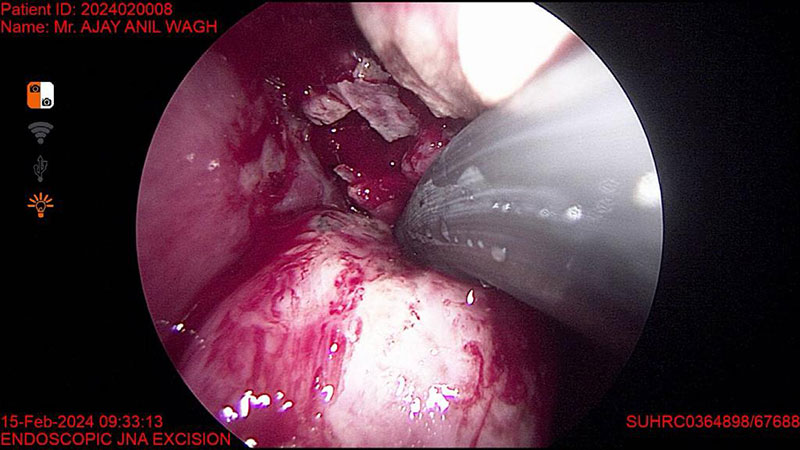
The ENT department at SUHRC is proud to announce the successful completion of an endoscopic skull base surgery. We're honored to be the 2nd center in Pune to offer this advanced procedure. Congratulations to Brig (Dr) Ramakrishnan, Head of the Department, Dr. Gaurav Chamania, Consultant ENT Surgeon, and the anesthesia team led by Dr. Jyothi Deshpande for their invaluable contributions to this challenging case.
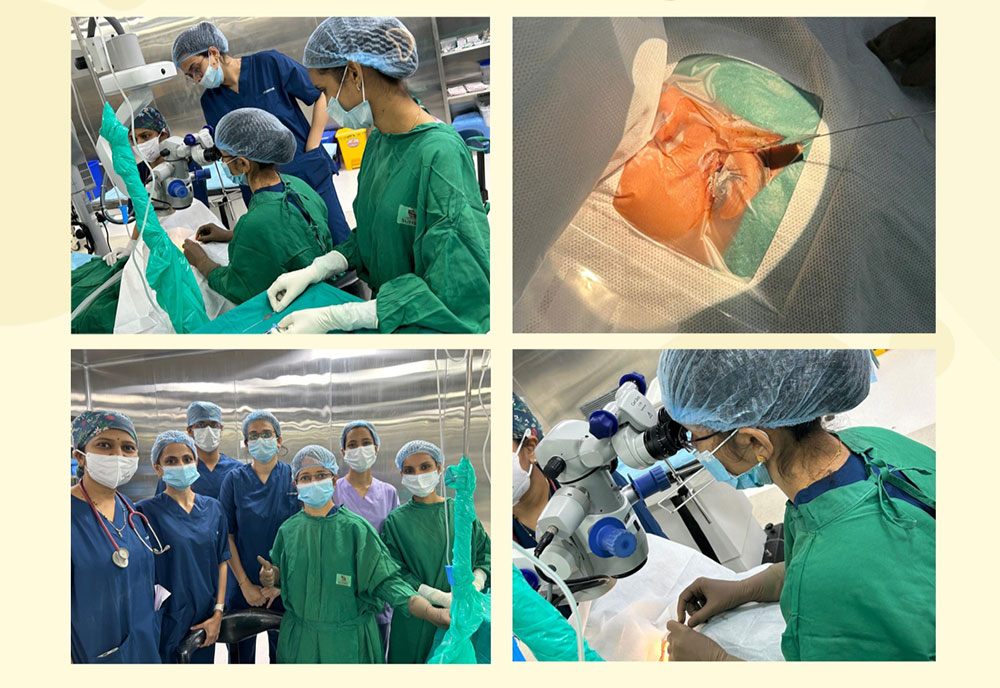
Lacrimal probing is a surgical procedure performed to address congenital blockages of the nasolacrimal duct, which can lead to Congenital Dacryocystitis.
Dr. Arundhati Pande recently performed two lacrimal probing surgeries on a two-and-a-half-year-old girl and a one-and-a-half-year-old boy on April 19th and April 24th, 2024, respectively, under general anesthesia. Both patients had presented to the Ophthalmology OPD with watering issues since birth.
The anesthesiologists for these procedures were Dr. Priyanka and Dr. Sapna, ensuring a safe and successful surgery.
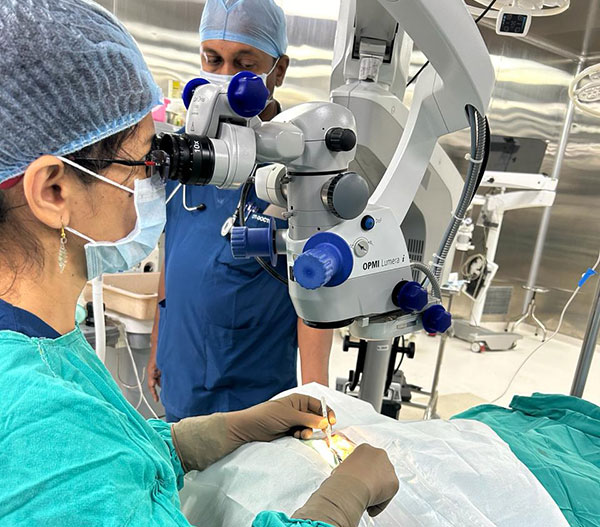
We're delighted to share the success of a recent squint surgery performed at SUHRC! A 36-year-old female visited our Ophthalmology OPD with concerns about Alternate Exotropia. Under the expert care of Dr. Arundhati Pande, Head of Department, and her dedicated team, the patient underwent successful surgery. We're pleased to report that the outcome has left the patient entirely satisfied!